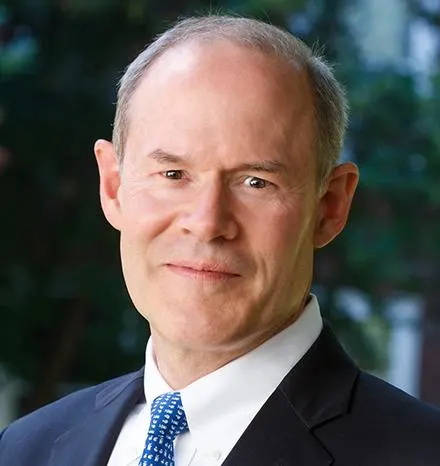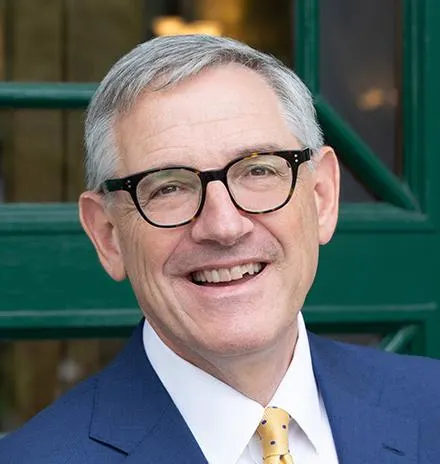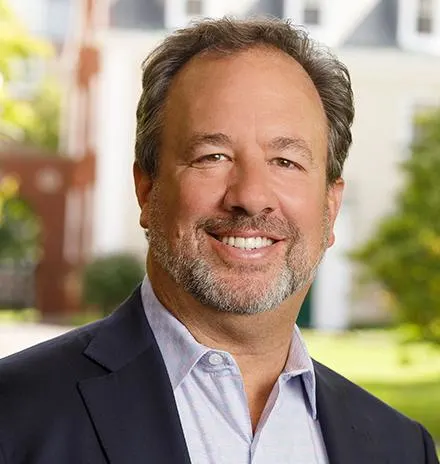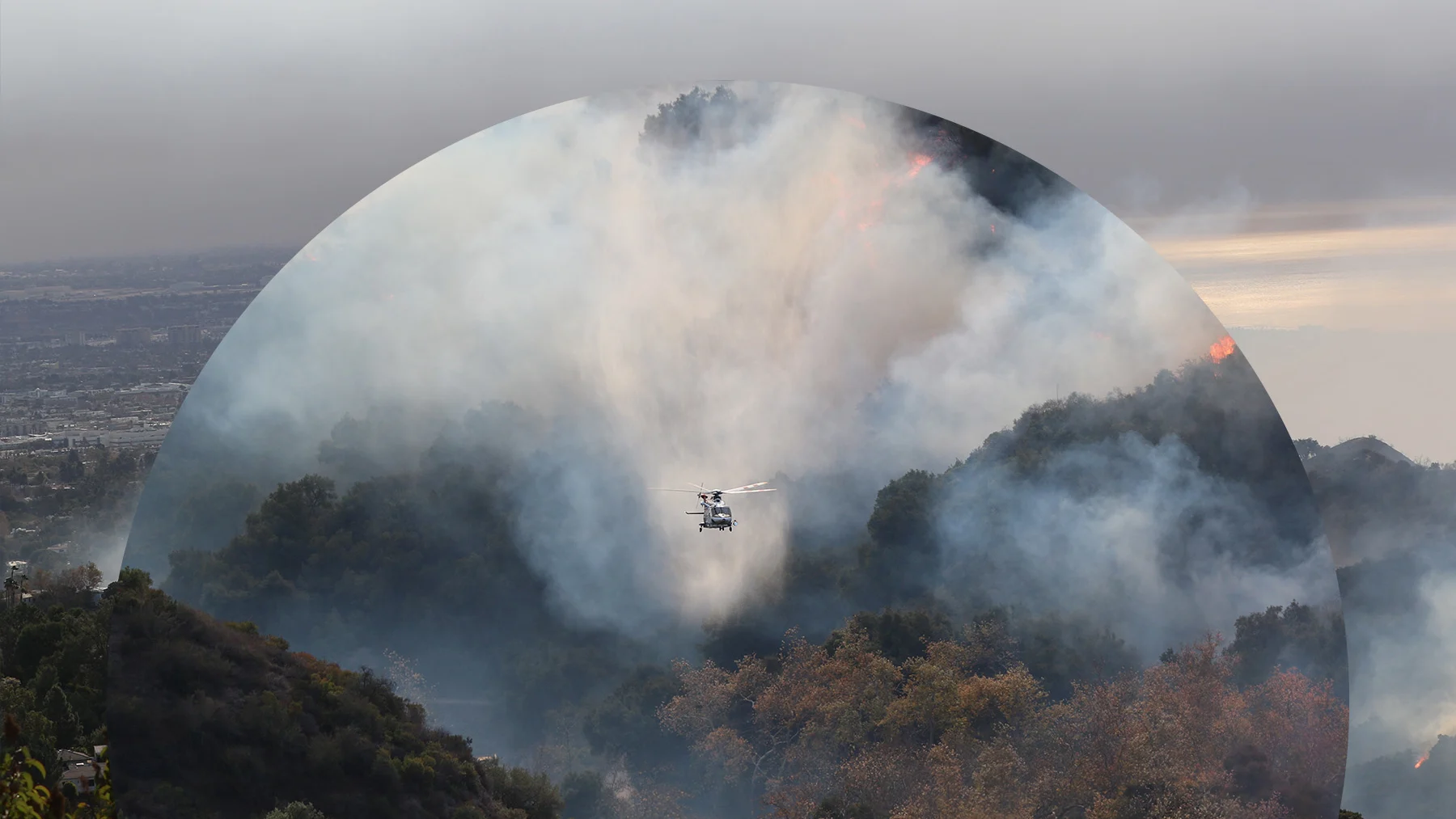Experts are still tallying the economic toll from devastating wildfires in Los Angeles, but even conservative estimates are in the hundreds of billions of dollars.
America’s second-largest city must not only rebuild but avert the next climate disaster. But how?
We asked experts affiliated with Harvard Business School’s Business and Environment Initiative to discuss the operational and policy changes leaders and lawmakers could consider to prevent, mitigate, and recover from these disasters, and the opportunities that might emerge in a changed climate. Here’s what they said.
Ishita Sen: Let market forces speak
For years, regulators in California, and several other states, have tried to keep insurance prices low.
My research shows that insurers raise rates in states with fewer restrictions on pricing to overcome these pricing challenges. The result: prices don’t accurately reflect the underlying risks of natural disasters in many parts of the country. Prices are low relative to risks in highly regulated states and high relative to risks in less regulated states.
This has consequences for homeowners lured to high-risk areas, seeing low prices. At the same time, many don’t purchase enough coverage, seeing high prices.
Other policies in insurance and mortgage markets have enabled financially fragile insurance companies to operate in high-risk areas in the country, creating a mirage of a functioning insurance industry. While it seems insurance markets are thriving, they aren’t really. When major disasters strike, many of these low-quality companies can’t withstand the shock, leading to insolvencies and large-scale market exits, with homeowners defaulting on mortgages and taxpayers ultimately left holding the bag.
While the existing regulatory framework, based on well-intentioned principles of risk sharing, may have worked in a world when risks were low, the system seems increasingly unsuitable for a world of escalating climate-related losses with the gap between high- and low-risk areas growing.
While it seems insurance markets are thriving, they aren’t really.
Persistently subsidizing those who live in high-risk areas at the expense of those in low-risk areas has been untenable for too long. It also makes the existing system ill-suited for large-scale, correlated risks: more insurance companies would exit if they aren’t allowed to increase prices, or they are forced to sell in risky areas.
However, things are changing. In January 2025, state regulators in California started allowing insurance companies to use catastrophic models to price their risks. The market in California is now facing a perfect storm because of the devastating wildfires and price deregulation occurring at the same time. These developments are likely to challenge homeowners in many ways in the immediate aftermath, with significant price increases stressing homeowners' finances, possible declines in real estate values, and the risk of increased mortgage defaults.
There are also a number of long-term benefits of more accurate risk pricing. Accurately priced insurance and mortgage contracts would serve as a deterrent, discouraging people from moving to areas with high climate risk and mitigating potential future losses and the likelihood of lives being devastated by natural disasters.
Homeowners would be incentivized to implement risk mitigation measures, and we would want to see insurance companies eventually offer discounts to homeowners who take steps to reduce their risks. Accurately priced insurance would also contribute significantly to creating a more financially stable insurance market.
By addressing these issues comprehensively, California and other states can work toward a more resilient insurance market that accurately reflects risks while protecting homeowners and insurers alike.
Ishita Sen is an assistant professor in the Finance Unit.
Jim Matheson: Embrace innovation to rebuild LA
In the wake of the wildfires, Los Angeles stands at a crossroads. As the city grapples with rising housing costs, aging infrastructure, and persistent climate risks, technology and innovation offer a unique opportunity to rebuild the LA community in a way that is not only highly resilient but also more equitable and economically sustainable. While this is an enormous task with myriad complexities, the recent tragedy offers the chance to apply a few simple and proven technologies and techniques to create a model city for the 21st century.
Lean into new housing materials and manufacturing methods. LA’s housing crisis requires solutions that drive down construction costs while enhancing quality and sustainability. Modular and 3D-printed housing can accelerate development timelines, making homes more affordable and energy-efficient. Innovations in prefabrication and mass timber construction also promise to reduce embodied carbon while enhancing structural resilience against earthquakes and extreme weather.
Reimagine community-centric energy and water systems. Decentralized energy and water infrastructure can reduce reliance on vulnerable centralized systems. Community microgrids—integrating renewables and energy storage — can provide neighborhoods with more reliable, affordable, and clean electricity. Similarly, localized water recycling and stormwater capture systems can help LA better manage its dwindling water supply and flood risks while reducing strain on aging pipelines and ensuring a more equitable resource distribution.
Los Angeles can paint a future that is not only more resilient but also highly livable and equitable, proving that sustainability and affordability can go hand in hand.
Leverage AI for smarter urban planning and resource allocation. Artificial Intelligence is already transforming urban planning, and its potential for rebuilding LA is immediate and immense. AI-driven data analytics can optimize land use, ensuring that new developments prioritize affordability and access to transit. Smart sensors and predictive maintenance algorithms can prevent future infrastructure failures and reduce costly emergency repairs. Additionally, AI-powered climate modeling can help the city anticipate and mitigate lingering risks from wildfires, floods, and extreme heat.
Craft the story and structures to create a more inclusive future. To ensure these solutions serve all Angelenos, policymakers, private sector leaders, technology innovators, and community organizations must collaborate on regulatory and financial frameworks that incentivize investment and support adoption. Creative public-private partnerships are needed to drive investment in sustainable infrastructure and foster smart choices and long-term decision making.
The challenges are daunting, but by harnessing cutting-edge technologies in housing, energy, water, and AI— and a holistic approach to rebuilding its communities—Los Angeles can paint a future that is not only more resilient but also highly livable and equitable, proving that sustainability and affordability can go hand in hand. Through these efforts, LA can transform itself from a cautionary tale into an inspiring success story worthy of Hollywood.
Jim Matheson is a senior lecturer in the Finance Unit.
John Macomber: Think risk x readiness
The crisis in Los Angeles, coupled with recent floods in North Carolina and Florida, will lead to a new era of public awareness of both risk and of readiness.
It’s a calculation that may soon be a mantra: risk times readiness (risk x readiness). Homeowners, businesses, institutions, and governments will be seeking information about broad climate perils—the probably of wildfire or river flooding in a certain location in a given year, for example. They will want to match that data with understanding of readiness:
Is my house or factory resistant to wind, seismic shifts, flood, and wildfire?
What is the benefit-cost ratio to become more ready?
How can buildings become more resistant, even beyond building code requirements?
With respect to destroyed property, should we build back same or build back better? There is a lot of incentive to build back same, driven by emotion, insurance coverage, building codes that emphasize life safety (not structural invincibility), and property entitlements, like legacy zoning. Then, how do we define what is better? How much better? Who pays up front for better?
Despite what those ads say on TV, insurance does not “protect” you—just because you have life insurance doesn’t mean you are protected from dying.
These decisions will likely be driven by funding sources, notably mortgage companies, since they are equipped to think about capital investment and long-term viability of the asset. Looking to insurance payouts seems like a possibility, but impact is limited by the nature of single-year contracts and by price distortion of insurance premiums. Despite what those ads say on TV, insurance does not “protect” you—just because you have life insurance doesn’t mean you are protected from dying. Property insurance is a short-term financial risk transfer, paid after the fact, and seldom in an amount or time frame that is satisfactory to you if your house or store has burned down.
This leads to the question of policy changes. It’s possible that regulatory changes will lag behind capital providers in terms of deciding which properties can actually get or renew mortgages and for how much value. When home buyers and lenders start to think hard about quantifying “risk x readiness,” one would expect less exposed and better-performing homes, factories, warehouses, and offices to gain value, and poorly prepared properties to lose value—perhaps by a lot. This will likely lead to a substantial realignment of property values, up or down, in some areas of some states—completely independent of policy and regulation.
We also can expect much more self-protection. We have all read stories about homes that survived because their owners had a water reservoir, an exterior sprinkler system, or a concrete roof. Or stories of business and institutions that have private fire department contracts.
Many people will assume that basic building codes and public services aren’t going to get the job done. If they’re located in a high-risk area, they’re going to do the math about investments in “home hardening” or early warning systems. These upgrades will have a positive payback both during their time in the home or warehouse or office building, and also for the next buyer and lender.
John Macomber is a senior lecturer in the Finance Unit.
Spencer Glendon: Prepare for a riskier future
It's important to understand that the probability of devastating fires in California has been rising for several reasons:
Winter comes much later. Beyond the fact that atmospheric temperatures have increased, there’s a longer period of summer and dry, hot weather.
Earth’s systems have more energy. The atmosphere and the oceans generally have more energy because they’re warmer, so that energy can be expressed in more powerful ways.
Landscapes and buildings aren’t suited to today’s climate conditions. California is full of microclimates, lots of little climates. All the plants, architecture, and infrastructure for each of those microclimates was suited to a past climate, not the climate that’s coming.
That said, nobody could have known that particular areas in Los Angeles were going to burn. And so you have this problem that risk in a broad area has gone up, but where exactly that risk will manifest is essentially impossible to forecast.
The climate in the past was very, very stable and very mild. We stayed in a very narrow range of climate for thousands of years. If you think about the sequoias and the redwoods—these are incredibly old trees that have been living in the same place for a super long time. Climate stability became a core feature of our culture. You could take the climate, the patterns, the weather, the seasons for granted.
This idea of a stable climate caused us to not pay attention to these risks. Our insurance system was built for house fires, not these kinds of natural disasters. Insurance policies have typically insisted on rebuilding the same thing in the same place, on the assumption that the event was an aberration.
One of the big questions going forward is: How should the risks of an entire region, of a larger community, be shared?
But those planting zones, building codes, and engineering standards were based on the past. Will we update them?
And so there's this disorientation because we can no longer look to the past to forecast the future. There's also bewilderment because we must now consider climate in decisions, a factor we didn't consider at all before.
One of the big questions going forward is: How should the risks of an entire region, of a larger community, be shared?
An ideal way forward might involve the city of LA buying insurance, instead of having individuals buy a lot more insurance. That’s because the whole area has risk, but we don't know where it will manifest.
So it's not that that place becomes unlivable, but it’s different and riskier. People will have to decide how to live in that different climate, and how to approach those risks.
Spencer Glendon founded the climate literacy nonprofit Probable Futures and is an executive fellow with the HBS Business and Environment Initiative.
Peter Tufano: Build back better with four principles
The California wildfires have caused an estimated $164 billion to $250 billion in damage. Wildfires—like other consequences of climate change—don’t differentiate between Republicans or Democrats, or other distinctions that define American political discourse today. In building forward better, our approach should move beyond finger pointing and posturing, and instead draw from our collective expertise, what’s left of our collective values, and collective action. I’d propose four principles for moving forward, grounded in science, economics, ethics, and management.
Science: Our failure to heed the advice of climate scientists—whom some seek to silence—has made extreme weather more frequent and harmful. These scientists and engineers seek to understand laws of nature, which politicians can neither overturn nor ignore. In rebuilding, let’s listen to the best scientific advice about how to reduce the risks of and losses from future wildfires.
Economics: Economists don’t uncover natural truths but rather study how individual choices influence outcomes. We can use probabilities and magnitudes of future damages, depending on how we build forward, to calculate the distribution of future losses from fires and hazards. To make better decisions, we can incorporate these probabilistic costs into insurance with risk-based pricing, or into public policy with cost-benefit analysis. Ignoring this information is just as dangerous as ignoring the cues from nature.
While we all want quick fixes, doing this right to reduce future problems may be a slower process.
Ethics: While the prevailing ethic principle seems to be “might makes right,” it may seem foolishly naive to mention moral principles. Libertarians call for individual freedom, but individual action will not solve our problems; we require collective action when our choices impose costs on others. My fondness for vegetation makes your property more likely to ignite. As a result, how we constrain choice will inevitably reflect moral or political philosophy tradeoffs. While the wealthy might have the resources to charge forward and rebuild, what are our collective duties to each other? Is there any scope in a world of risk-based pricing to consider fairness?
Management: A massive project like reconstructing neighborhoods is an exercise in urban planning or, put more broadly, systems change. “Leading” systems change requires collecting information broadly; assembling a coalition to effect change; and keeping that coalition energized and engaged. While we all want quick fixes, doing this right to reduce future problems may be a slower process.
I’ve resisted the pressure to “crack the case,” but rather reminded us that we need to listen widely, reason and work together, and never check our ethical sensibilities at the door.
Peter Tufano is a Baker Foundation Professor and a senior adviser to the Harvard Salata Institute for Climate Sustainability.
Image by HBSWK with assets from AdobeStock/Pierce.







